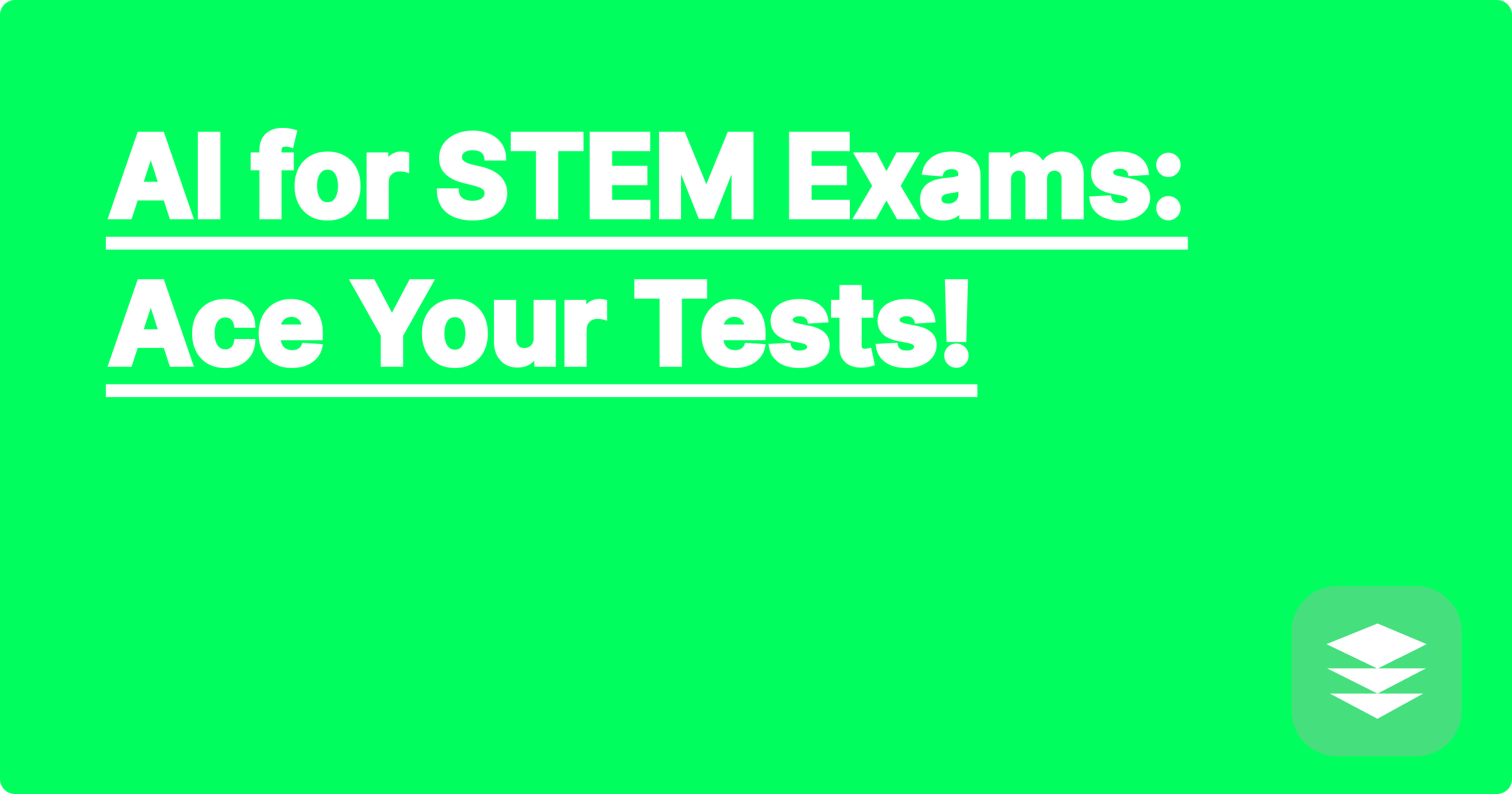
The demanding world of STEM education and research often leaves students feeling overwhelmed, constantly battling complex concepts and rigorous exams. Balancing coursework, research projects, and personal life can feel like an impossible equation. But what if there was a secret weapon, a quantum leap strategy to unlock your full potential and conquer those daunting STEM exams? Artificial intelligence (AI) is rapidly transforming the educational landscape, offering powerful tools to streamline learning, boost comprehension, and ultimately, ace your tests. This isn't about replacing hard work, but about working smarter, not harder, by leveraging AI's capabilities to enhance your existing study strategies.
For high-achieving STEM students, maintaining a high GPA while juggling multiple responsibilities is crucial. This blog post is your guide to harnessing the power of AI, specifically Generative Pre-trained AI (GPAI) tools, to optimize your study time, deepen your understanding of complex topics, and achieve academic excellence. Think of this as your personal AI cheat sheet, curated by a friendly STEM senior who's been there and cracked the code. We'll explore practical applications, real-world examples, and actionable strategies to integrate AI into your study routine, empowering you to not just survive, but thrive in the competitive world of STEM.
STEM fields are inherently challenging, demanding a deep understanding of complex theories, formulas, and experimental procedures. Traditional study methods often involve rote memorization and endless practice problems, which can be time-consuming and ineffective for truly grasping the underlying concepts. Moreover, the sheer volume of information can be overwhelming, making it difficult to identify key concepts and prioritize study efforts. Students often find themselves trapped in a cycle of cramming and surface-level learning, leading to burnout and suboptimal performance on exams. This is where AI steps in, offering a powerful alternative to traditional study methods.
Imagine having a personalized tutor available 24/7, capable of explaining complex concepts in simple terms, generating practice questions tailored to your specific weaknesses, and even helping you analyze research data. That's the power of GPAI tools like ChatGPT and Wolfram Alpha. ChatGPT can be used to break down complex topics, provide alternative explanations, and even generate practice exam questions. For example, if you’re struggling with a particular concept in organic chemistry, you can ask ChatGPT to explain it in different ways, provide examples, or even create practice problems related to that specific concept. Wolfram Alpha excels at computational tasks, allowing you to quickly solve complex equations, visualize data, and explore scientific concepts through interactive demonstrations. By integrating these tools into your study routine, you can transform your learning experience and significantly boost your exam performance.
Using GPAI tools for exam preparation is straightforward. First, identify the specific topics you need to study. Then, use ChatGPT to summarize key concepts, generate practice questions, and explain difficult material. You can even ask it to create a "GPAI CheatSheet" summarizing important formulas or concepts. Next, use Wolfram Alpha to solve practice problems, visualize data, and explore related concepts. This combined approach allows you to both understand the material and practice applying it, leading to a deeper and more lasting understanding. Remember, these tools are meant to augment your existing study habits, not replace them entirely.
Consider a student preparing for a biochemistry exam. They could use ChatGPT to explain the Krebs cycle, generate practice questions about metabolic pathways, and even summarize key enzymatic reactions. Then, they could use Wolfram Alpha to calculate reaction rates, visualize molecular structures, and explore the thermodynamic properties of biochemical reactions. This integrated approach provides a comprehensive understanding of the material, leading to improved exam performance. Another example could be a physics student using Wolfram Alpha to solve complex equations related to electromagnetism, visualize vector fields, and explore the behavior of particles in different scenarios. These are just a few examples of how AI can be used to enhance STEM learning.
To maximize your benefits from AI tools, focus on active learning. Don't just passively consume information; engage with the material by asking questions, generating your own examples, and testing your understanding. Experiment with different GPAI tools to find what works best for you. Some tools might be better suited for certain subjects or learning styles. For advanced users, explore the customization options available within these tools. You can fine-tune parameters, create custom models, and tailor the AI's output to your specific needs. Remember, the key to success is not just using the tools, but using them effectively and integrating them into a comprehensive study strategy.
By embracing AI, you're not just preparing for your next exam; you're investing in your future. AI proficiency is becoming increasingly important in STEM fields, and by developing these skills now, you'll be well-positioned for success in your academic career and beyond. Explore online resources, attend workshops, and connect with other students who are using AI in their studies. The future of STEM is intertwined with AI, and by embracing these powerful tools, you can unlock your full potential and embark on a path towards academic excellence and a fulfilling career. Don't just ride the wave of technological advancement; become a driving force in shaping the future of STEM.
AI for STEM Exams: Ace Your Tests!
AI-Powered Lab Data: Analyze Faster!
STEM Research: AI Study Boost!
AI-Powered DOE: Optimize Your Experiments
AI Simulation: Faster, Better Results
AI in Research: Design Smarter Studies
Ace STEM Exams: AI-Powered Prep
Mastering STEM: AI Study Guide